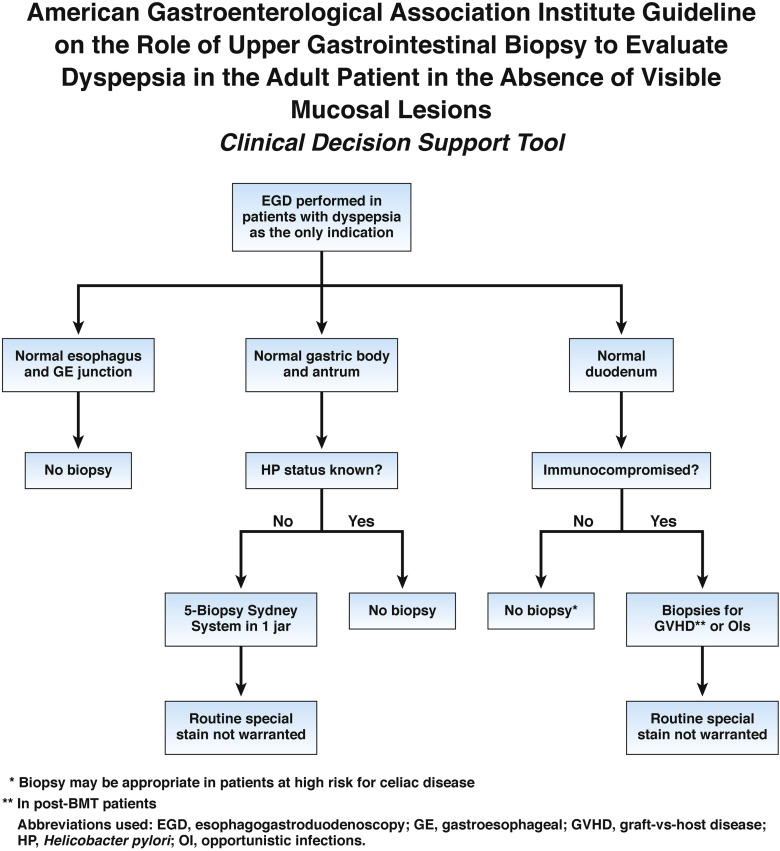1. In patients undergoing esophagogastroduodenoscopy (EGD) for dyspepsia as the sole indication, AGA recommends against obtaining routine biopsies of the normal-appearing esophagus or gastroesophageal (GE) junction regardless of immune status.
2. In immunocompetent patients undergoing EGD for dyspepsia as the sole indication, AGA recommends obtaining routine biopsies of the normal-appearing gastric body and antrum for the detection of helicobacter pylori (H. pylori) infection if the H. pylori infection status is unknown.
3. In immunocompromised patients undergoing EGD for dyspepsia as the sole indication, AGA recommends obtaining routine biopsies of the normal-appearing gastric body and antrum for the detection of H. pylori infection if the H. pylori infection status is unknown.
4. When obtaining biopsies from the normal-appearing gastric body and antrum for the detection of H. pylori infection, AGA suggests following the 5-biopsy Sydney System with all specimens placed in the same jar.
5. When biopsies are obtained from the normal-appearing gastric body and antrum for the detection of H. pylori infection, AGA suggests not obtaining automatic special staining of the specimens.
6. In patients undergoing EGD for dyspepsia as the sole indication, and in the absence of signs or symptoms associated with an increased risk of celiac disease, AGA suggests not obtaining routine biopsies of the normal-appearing duodenum to detect celiac disease.
7. In immunocompromised patients undergoing EGD for dyspepsia as the sole indication, AGA suggests obtaining routine biopsies of the normal-appearing duodenum for the detection of graft-versus-host disease (GVHD) in post-allogeneic tissue transplantation patients and for opportunistic infections.
8. When biopsies are obtained from the normal-appearing duodenum, AGA suggests not performing routine special staining of the specimens.













